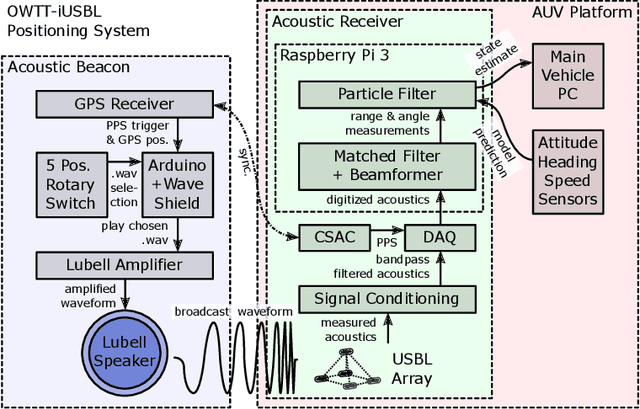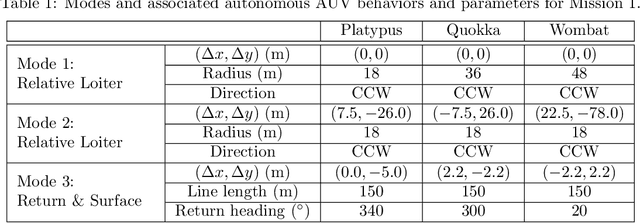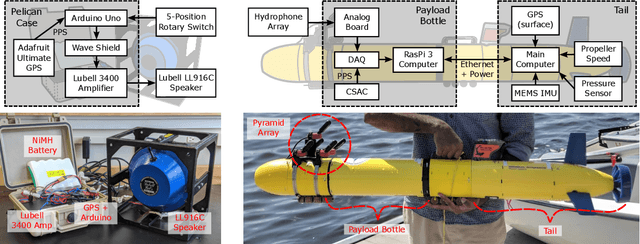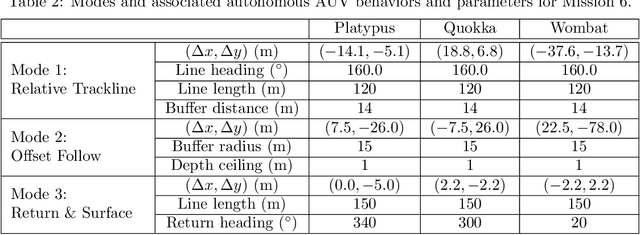Synchronous-Clock Range-Angle Relative Acoustic Navigation: A Unified Approach to Multi-AUV Localization, Command, Control and Coordination
Paper and Code
Oct 26, 2021



This paper presents a scalable acoustic navigation approach for the unified command, control and coordination of multiple autonomous underwater vehicles (AUVs). Existing multi-AUV operations typically achieve coordination manually, by programming individual vehicles on the surface via radio communications, which becomes impractical with large vehicle numbers; or they require bi-directional inter-vehicle acoustic communications to achieve limited coordination when submerged, with limited scalability due to the physical properties of the acoustic channel. Our approach utilizes a single, periodically-broadcasting beacon acting as a navigation reference for the group of AUVs, each of which carries a chip-scale atomic clock (CSAC) and fixed ultra-short baseline (USBL) array of acoustic receivers. One-way travel-time (OWTT) from synchronized clocks and time-delays between signals received by each array element allows any number of vehicles within receive distance to determine range, angle, and thus determine their relative position to the beacon. The operator can command different vehicle behaviors by selecting between broadcast signals from a predetermined set, while coordination between AUVs is achieved without inter-vehicle communication, by defining individual vehicle behaviors within the context of the group. Vehicle behaviors are designed within a beacon-centric moving frame of reference, allowing the operator to control the absolute position of the AUV group by re-positioning the navigation beacon to survey the area of interest. Multiple deployments with a fleet of three miniature, low-cost SandShark AUVs performing closed-loop acoustic navigation in real-time provide experimental results validated against a secondary long-baseline (LBL) positioning system, demonstrating the capabilities and robustness of our approach with real-world data.
 Add to Chrome
Add to Chrome Add to Firefox
Add to Firefox Add to Edge
Add to Edge